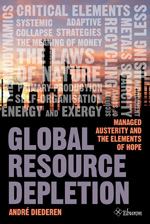This one gets it pretty much right I think. I think the BP oil spew was maybe the story of the Decade. I also think that the third world led by China as an ever thirstier consumer of liquid carbon fuels has been over played. But first I found them at Peak Oil, that ever depressing, in a rogue sort of way, website. So have a Happy New Year folks:
http://peakoil.com/generalideas/robert-rapier-top-10-energy-related-stories-of-2010/
But it is a repost from this Blog so Happy New Year to you too.
http://www.consumerenergyreport.com/2010/12/28/my-top-10-energy-related-stories-of-2010/
My Top 10 Energy Related Stories of 2010
Posted by Robert Rapier on Tuesday, December 28, 2010
Here are my choices for the Top 10 energy related stories of 2010. I can’t remember having such a difficult time squeezing this list down to 10 stories, because there were many important energy stories for 2010. It was hard to cut some of them from the Top 10; so hard that I almost did a Top 15. But I made some difficult choices, and offer my views on the 10 most important energy stories of 2010. Previously I listed a link to Platt’s survey of the Top 10 oil stories of 2010, but my list covers more than just oil.
Reviewing my list of Top 10 Energy Related Stories of 2009, I see that I made three predictions. Those predictions were:
- China’s moves are going to continue to make waves
- There will be more delays (and excuses) from those attempting to produce fuel from algae and cellulose
- There will be little relief from oil prices.
Given that total energy demand from China surpassed that of the U.S. in 2010 (five years earlier than expected), the EPA twice rolled back cellulosic ethanol mandates (and there are still no functioning commercial plants), and we are closing the year with oil above $90 per barrel, I would say I nailed all of those.
For this year’s list, don’t get too hung up on the relative rankings. They are mostly subjective, but I think we would have fairly broad agreement on the top story.
1. Deepwater Horizon Accident
 On April 20, 2010 the BP-owned Deepwater Horizon drilling rig exploded, killing 11 men working on the rig and injuring 17 others. Because of the depth of the rig, there was no easy way to cap it and it gushed oil until it was finally capped three months later on July 15th. In the interim, the leak released almost 5 million barrels of oil into the Gulf of Mexico, making it the largest accidental marine oil spill in the history of the petroleum industry. In fact, not only was this my top energy story of the year, according to a poll of AP writers and editors it was the top news story period.
On April 20, 2010 the BP-owned Deepwater Horizon drilling rig exploded, killing 11 men working on the rig and injuring 17 others. Because of the depth of the rig, there was no easy way to cap it and it gushed oil until it was finally capped three months later on July 15th. In the interim, the leak released almost 5 million barrels of oil into the Gulf of Mexico, making it the largest accidental marine oil spill in the history of the petroleum industry. In fact, not only was this my top energy story of the year, according to a poll of AP writers and editors it was the top news story period.
2. The Deepwater Horizon Fallout
While the accident itself was the biggest story, there was much fallout from the incident that will continue to be felt for years. Just three weeks before the incident, President Obama had proposed to open up vast new areas off the Atlantic coast, the eastern Gulf of Mexico, and the north coast of Alaska. Governor Schwarzeneggar was pushing for offshore oil drilling near Santa Barbara County. There was a great deal of momentum that promised to greatly expand the areas available for offshore production. In the wake of the disaster, the debate shifted sharply. President Obama canceled a planned August offshore drilling lease sale in the Western Gulf and off the coast of Virginia, citing that his “eyes had been opened” to the risks of offshore drilling. The administration also put a temporary deepwater drilling ban in place until additional safety reviews could take place. Governor Schwarzeneggar dropped his plans, citing the spill as evidence that offshore drilling still poses too great a risk.
But there were far-reaching impacts in other areas. BP began to sell off assets, raising $10 billion to pay claims of those impacted by the spill. BP CEO Tony Hayward — after a series of gaffes — stepped down from the helm of BP. Around the area affected by the spill, people lost jobs, particularly in the fishing and tourism industries. The long-term environmental impact remains uncertain, with some groups claiming the area has recovered, and others stating that it will be years before the full environmental impact can be determined.
3. China Becomes World’s Top Energy Consumer
For more than a century, the United States has been the world’s top consumer of energy. In 2010, China surpassed the U.S. in total energy consumption. If not for the Deepwater Horizon accident, this would have easily been my #1 story. As I said last year, I believe that China will be the single-biggest driver of oil prices over at least the next 5-10 years.
:}
Personally I do not see Matt Simmons’ death as a huge energy story, but this guy knew him so I can understand the inclusion. More next week.
:}









